2024 Ford Ranger Raptor Jumps, Hustles, and Loves the Dirt
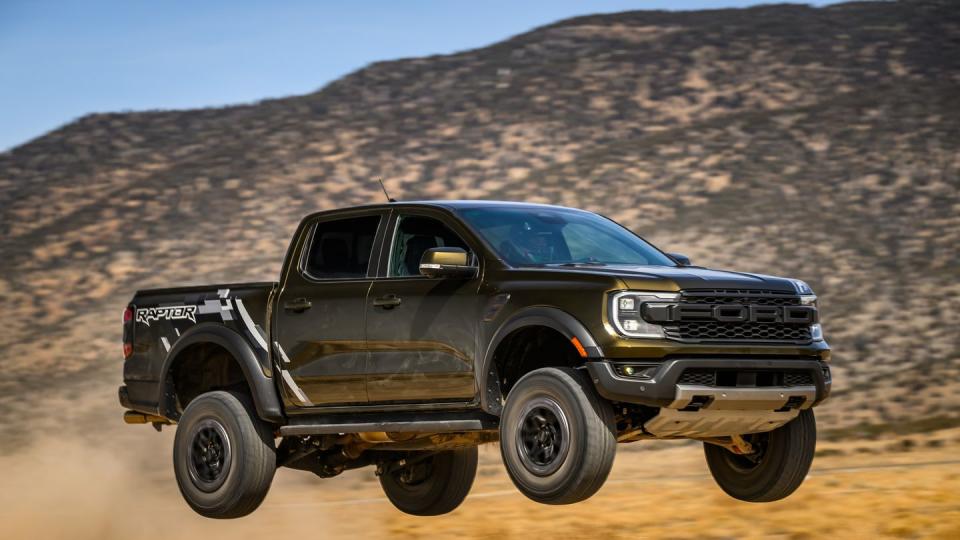
The 2024 Ford Ranger Raptor starts at $57,065 and is on sale now.
The high-flying off-roader features a turbocharged 3.0-liter V6 under the hood that sends 405 hp and 430 lb-ft of torque through a 10-speed automatic transmission.
Ford’s Ranger Raptor replaces the rear leaf springs with coil springs and pivots to a Watts-link suspension to control the rear axle.
It seems obvious now, but it was hard to imagine the rippled waves caused by Ford’s F-150 SVT Raptor’s launch over a decade ago. The first generation of Ford’s Baja-blasting pickup was cool, but it was hard to see through all of the desert sand that this Raptor name would become synonymous with Ford’s off-roading efforts.
Well, with the launch of the Ranger Raptor in Australia, the Raptor name became further entrenched as a staple in Ford’s lineup. Now, after a handful of years as a forbidden fruit, you can travel down to your local Ford dealer and drive away in your own Ranger Raptor—without a manufacturer’s plate, or any creative registration.
Ford’s Ranger Raptor follows the same path as its full-size stablemate. It has more power than the base Ranger, a better suspension, and more aggressive styling. A massive Ford block-letter grille joins wider fenders and 17-inch beadlock-capable wheels to let the world know this isn’t just a Ranger work truck.
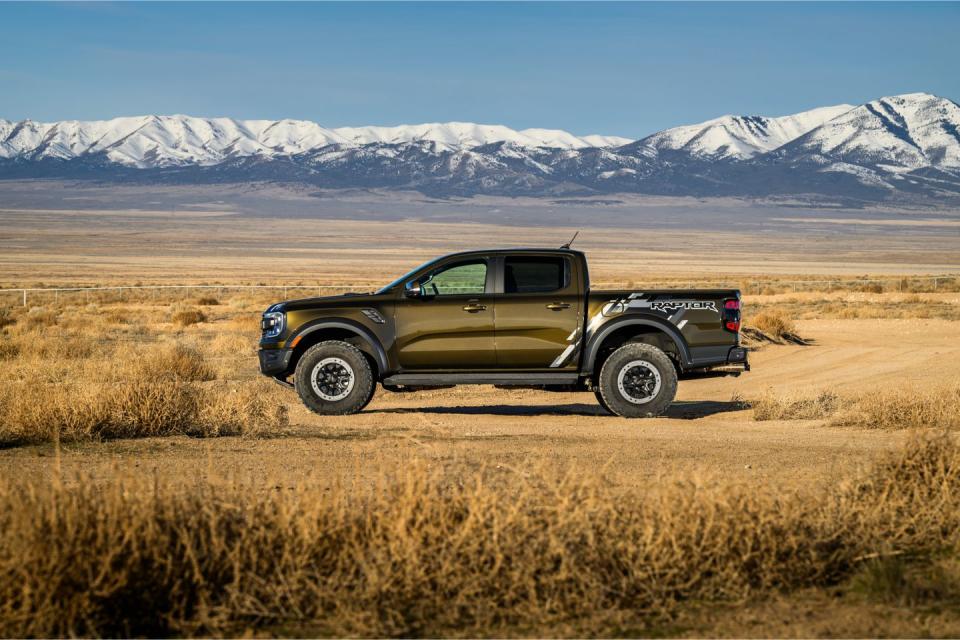
Of course, handwaving away the two most important upgrades heading to the Ranger Raptor would be unwise. Powering the Ranger Raptor is Ford’s 3.0-liter EcoBoost turbocharged V6, which sends 405 hp and 430 lb-ft of torque through a 10-speed transmission.
That’s down on power compared to the Bronco Raptor, surprisingly, but still not too far away from the Ford F-150 Raptor’s 450-hp entry point. Numbers aside, this powertrain is a big improvement over the base Ranger’s 2.3-liter turbocharged I4.
Your right foot has good control over the power delivery in normal mode, with the more aggressive Sport and Baja drive modes predictably giving you more throttle position at tip-in.
The 10-speed automatic performs well on and off the pavement. Shifts are crisp and quick, and there isn’t any real gear wandering while driving around despite the high gear count. But during low-speed maneuvers off-road, the transmission can shift at inopportune times and unsettle the rig while you’re on a rock. Of course, the easy fix for this is to lock the transmission into manual mode and take the shifting power into your own hands.
Even though this has a ton more power than the base Ranger, the true star of the Ranger Raptor is how it manages its wheels and tires. Just like the F-150 Raptor, this Ranger sports a substantial upgrade underneath.
Handling the damping is a set of 2.5-inch Fox LiveValve shocks front and rear. Internal bypass at the front, but piggyback reservoirs at the rear better manage the shock’s abuse. Helping these shocks do their job, Ford uses sensors in the suspension to determine the best way to dampen.
These shocks help the front forged-aluminum control arms and the rear live axle work in tandem to control wheel movement. However, the biggest departure from the base-model Ranger is at the rear.
Ford eschews the leaf springs found at the rear of the rest of the Ranger lineup, opting for coil springs to handle the load. Instead, Ford pivoted to a multi-link rear suspension with a Watts link.
For those who like driving at high speeds over bad surfaces, this is good news. The rear suspension works great at locating the rear axle and helping you better control the rig in the process. Sure, the Watts link might be overkill, but the added lateral axle control is a welcome feature regardless.
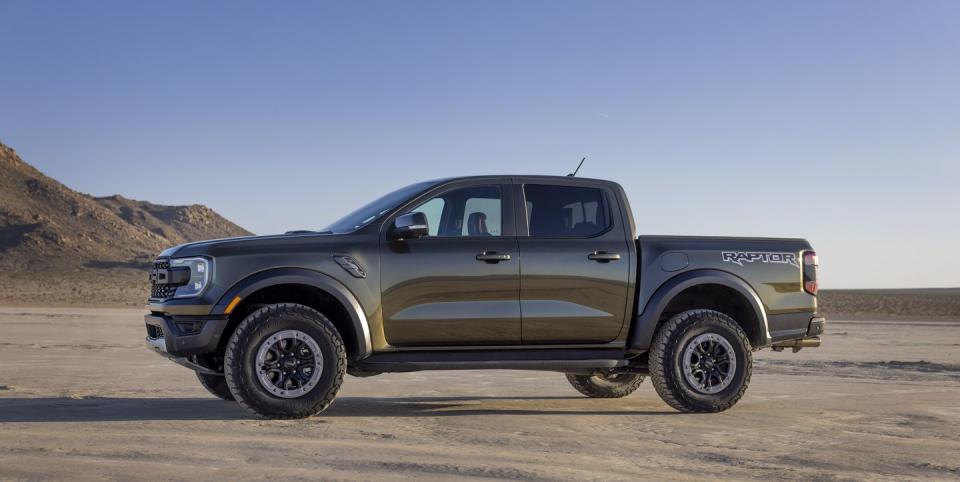
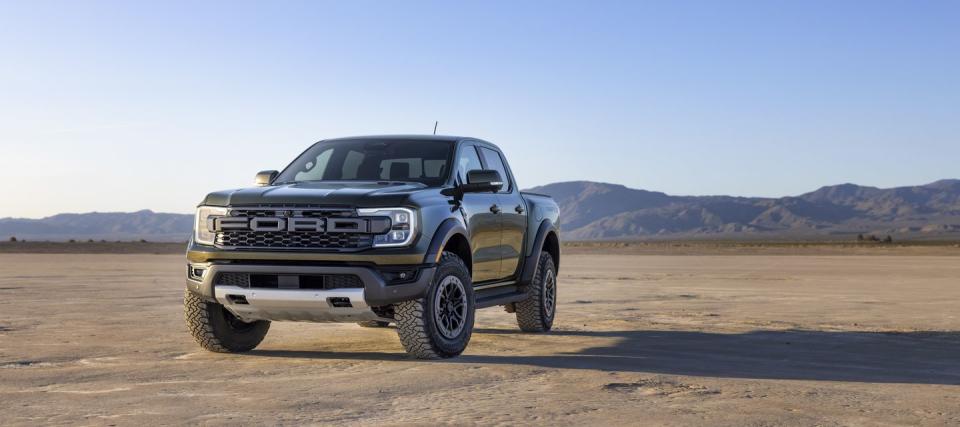
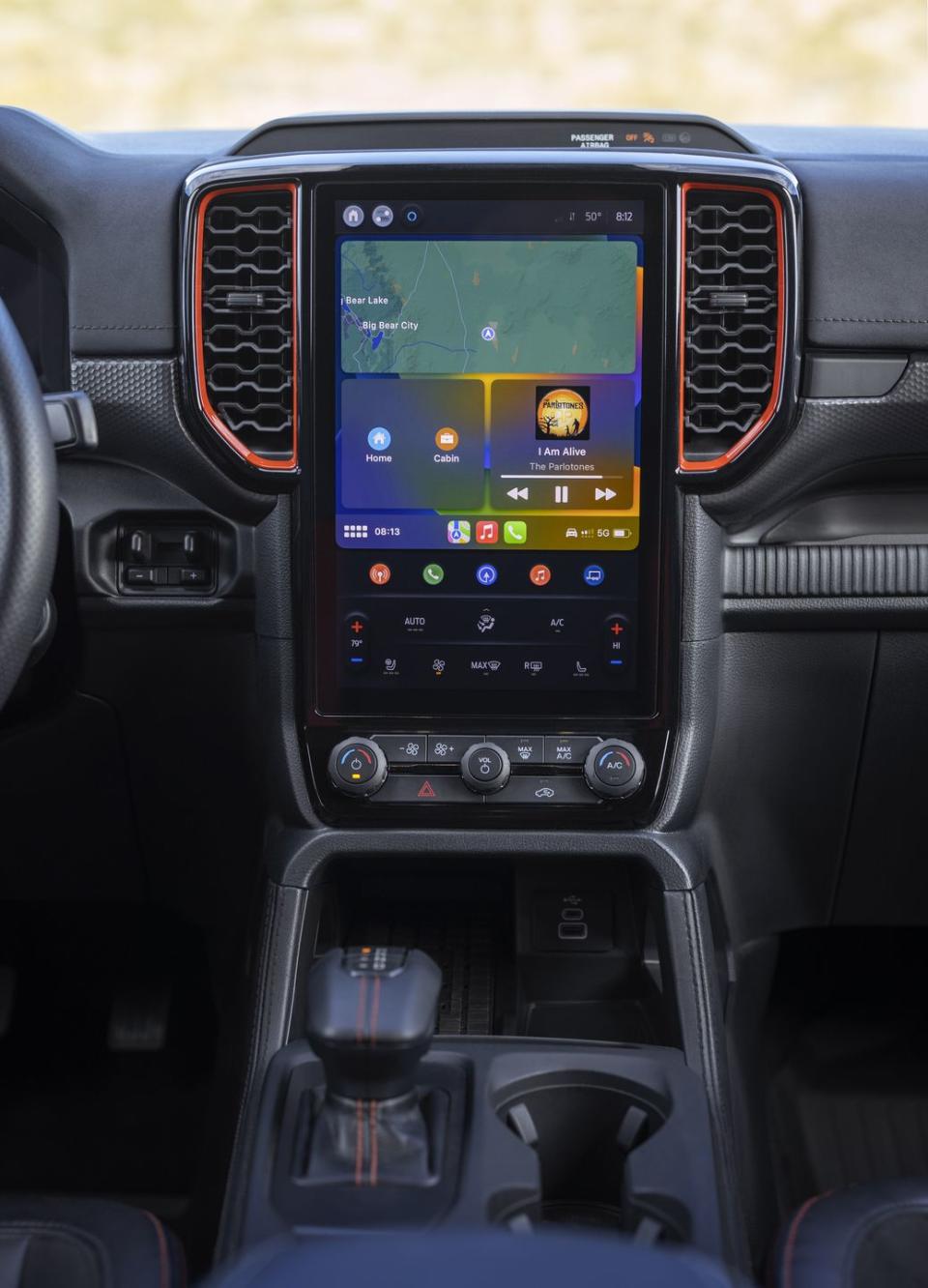
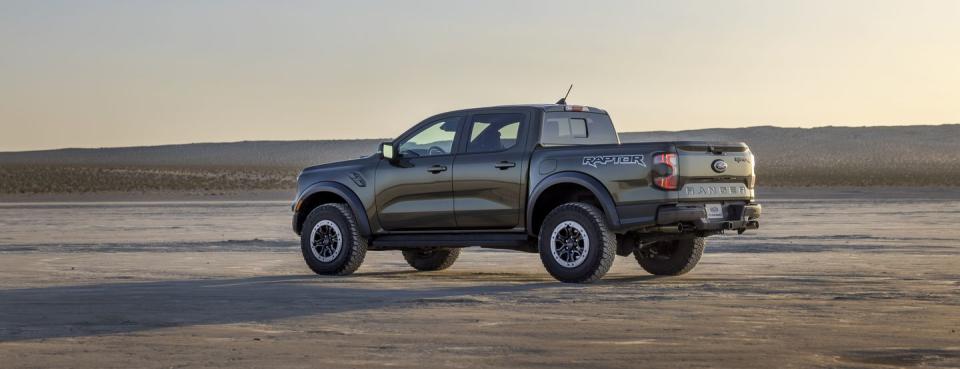
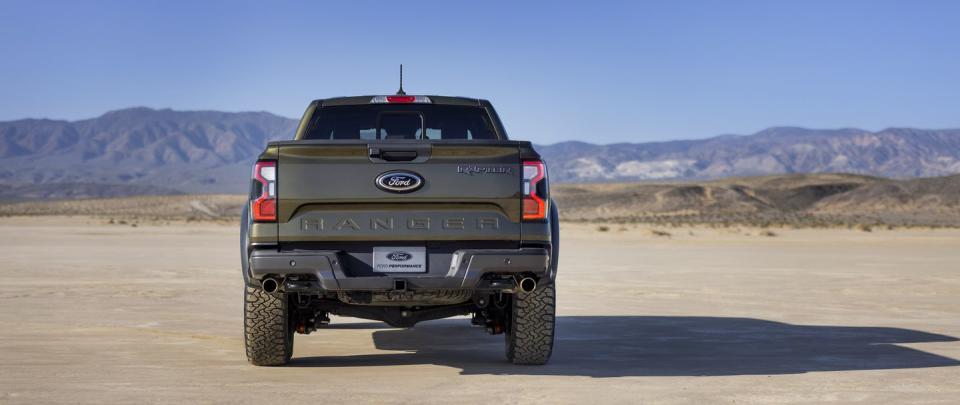
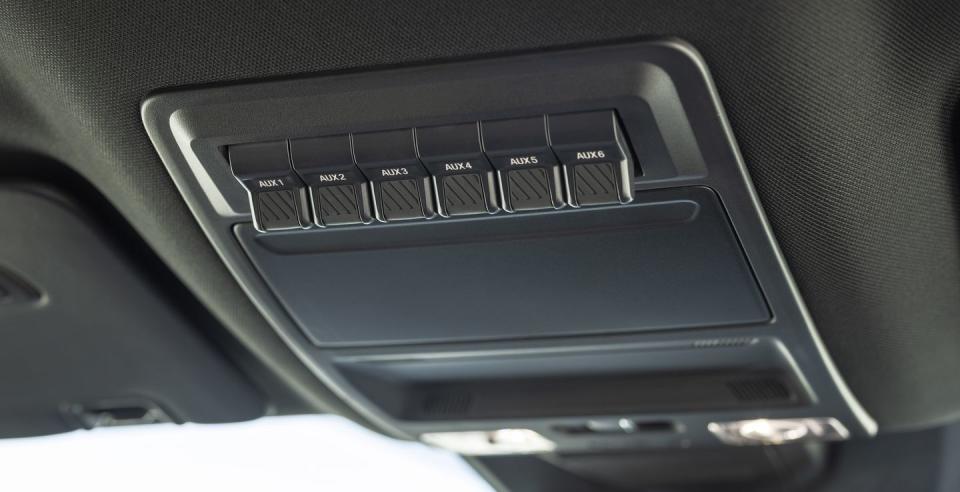
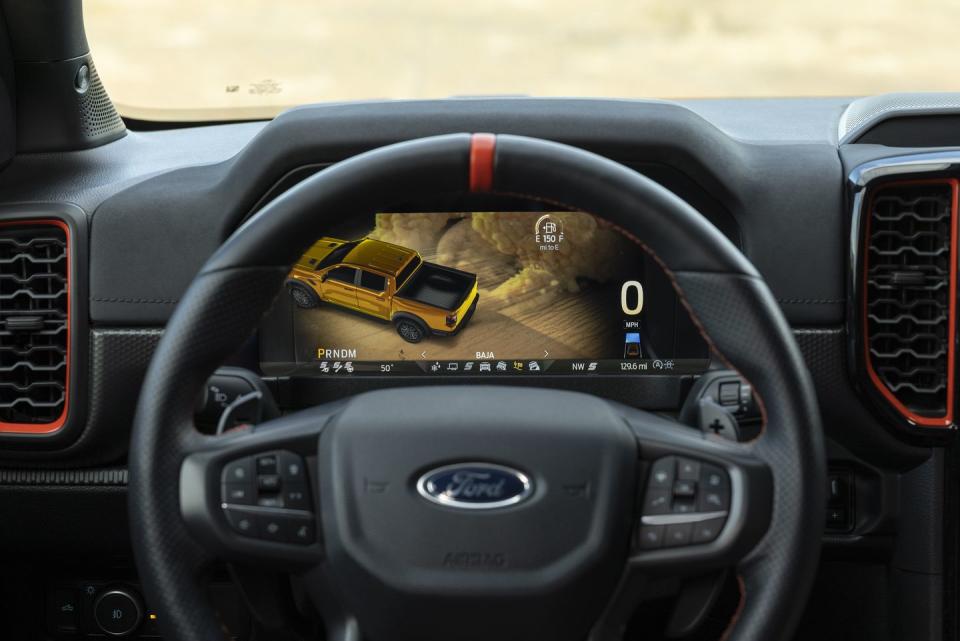
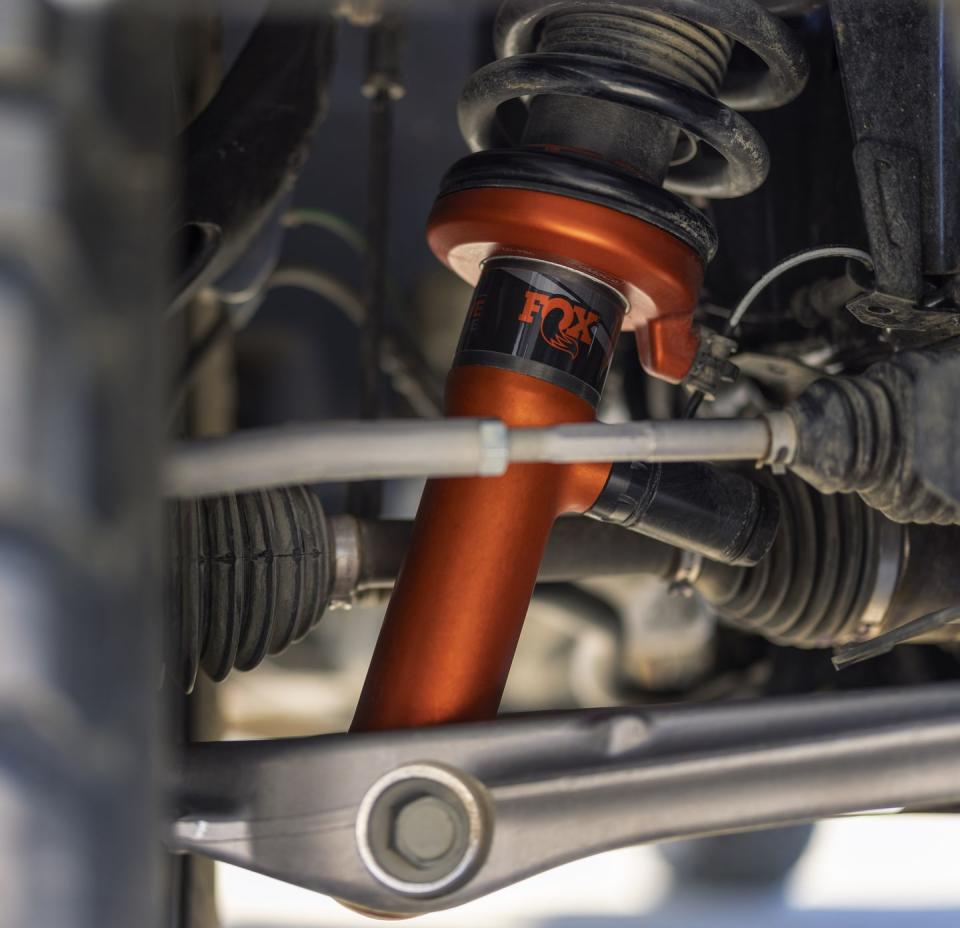
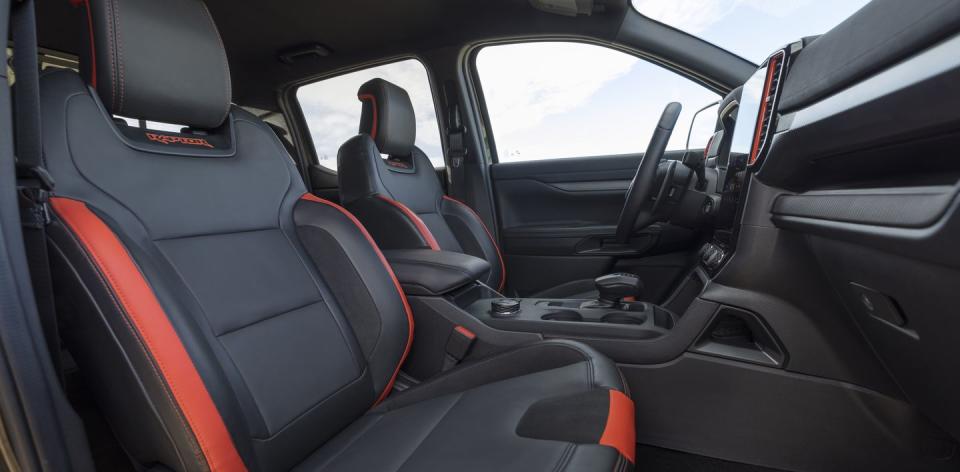
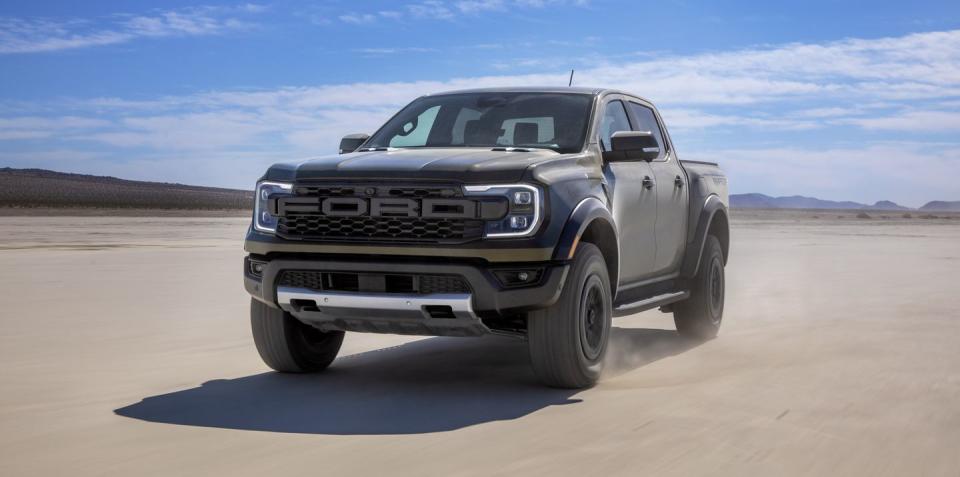
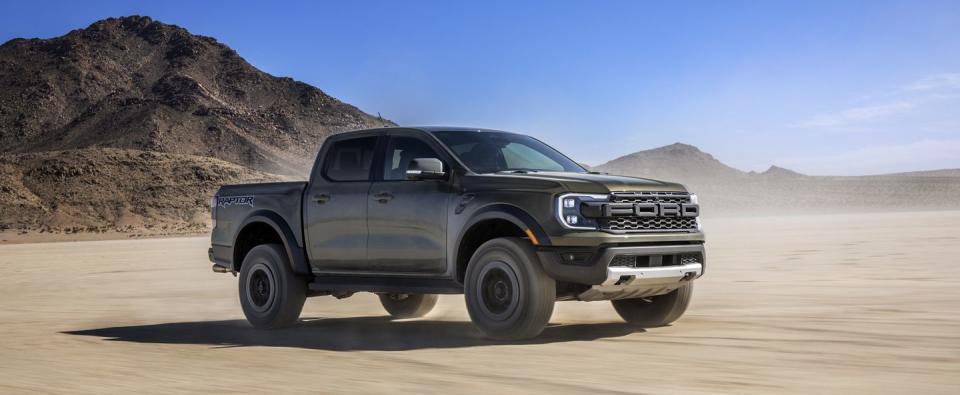
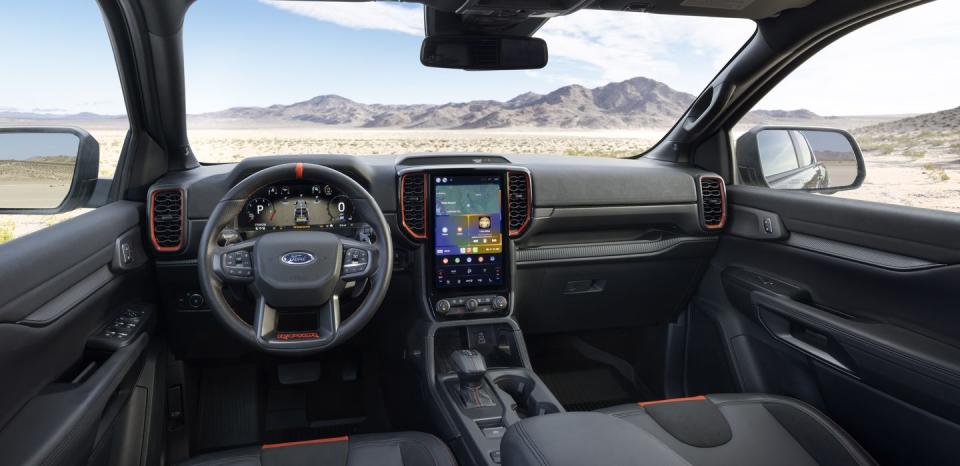
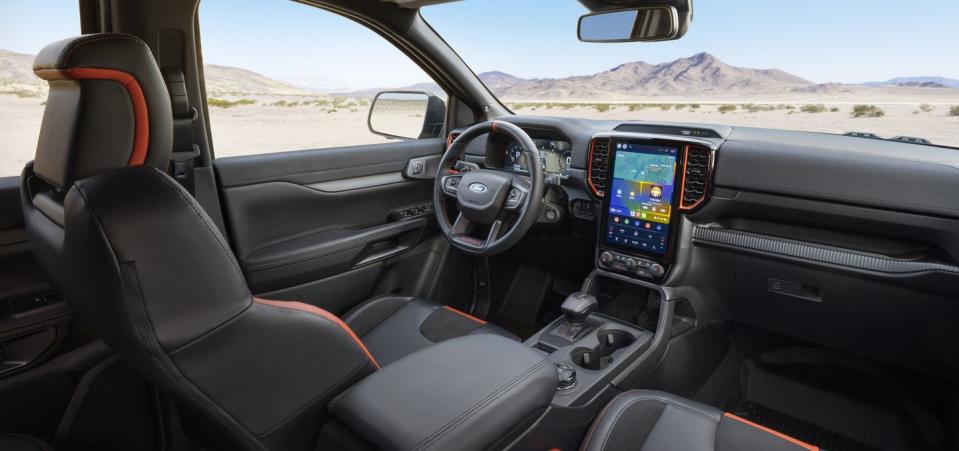
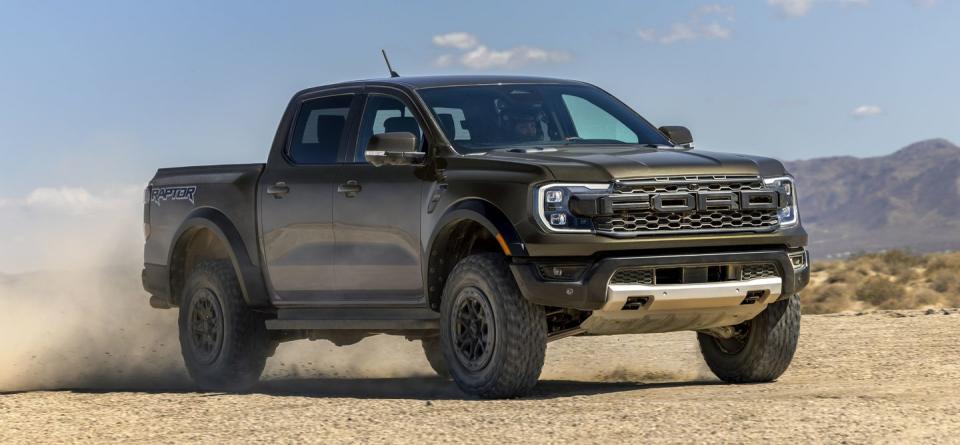
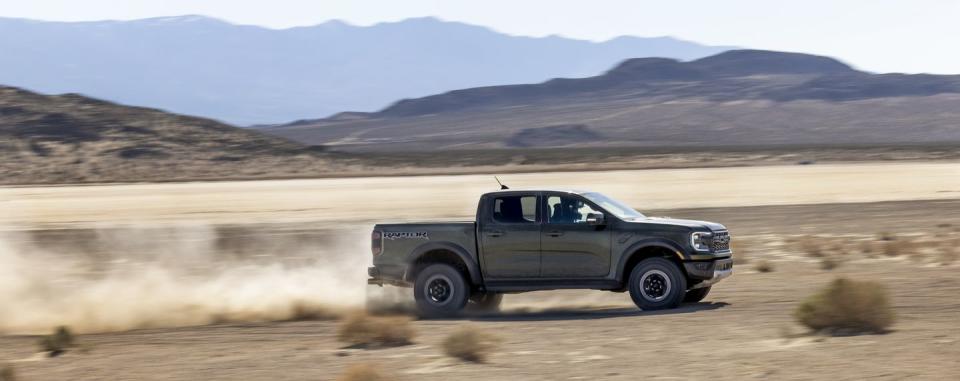
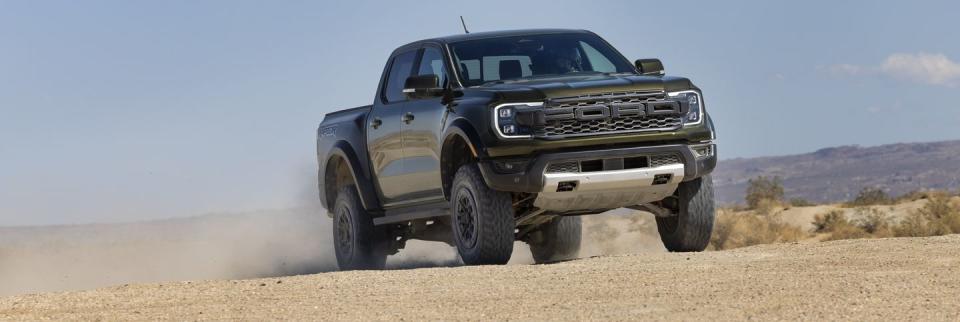
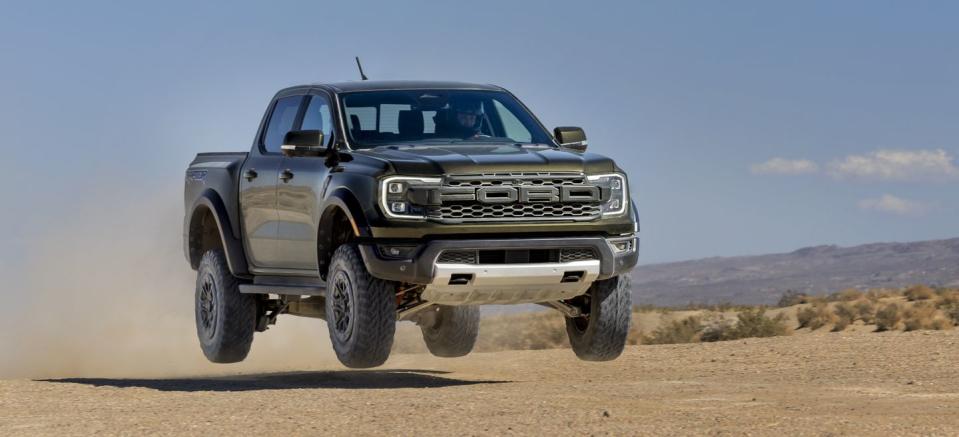
How does this translate? Well, on paved surfaces, it’s fine. The truck is soft, comfortable, and well behaved. When you move off-road, you can take advantage of this expensive and high-tech set of dampers and more capable suspension design.
On loose surfaces like dirt and sand, the Ranger Raptor is tossable but still goes where you point it. It does well at managing surface imperfections at speed.
Over rocks, the only real limitation might be the 33-inch tires, which is a surprise compared to the larger tire package found on the Ford Bronco.
This might not be the best crawling rig money can buy, but if you find yourself having to ascend an off-road trail, the front and rear locking differentials work well with the wheel and tire package to help crawl you up and ease you down.
The size of the truck is the real limiting factor while crawling through trails, and if that’s your prerogative Ford would gladly sell you a Bronco instead.
There’s also a revised interior in this more capable Ranger. Sure, there are some fancy upgraded finishes, with revised bezels and trims, but the broad strokes of the interior carry over from the base Ranger: a large digital instrument cluster and a large digital media touchscreen.
The bigger difference is in the seating. Bolstered bucket seats keep your base and core better supported while throwing the Ranger Raptor around in the dirt. The rear seating is changed, too, with slightly more support for passengers.
All in all, this answers the call for those who were craving Raptor prowess in a slightly smaller shell. However, this comes at a price. The Ford Ranger Raptor will start at $57,065 and can get even pricier with a few extras. That price also includes a one-day trip to the Ford Raptor Assault School to help you better understand your new truck’s capabilities.
For those keeping track of Raptor pricing, that’s about $20,000 less than the Ford F-150 Raptor. Still, this Ranger Raptor is costly. While it has an expensive sticker price, it might make up for it with the curb appeal and the fun factor.
Do you think the Ranger Raptor is going to be a hit? Tell us your thoughts below.

 Yahoo Autos
Yahoo Autos 